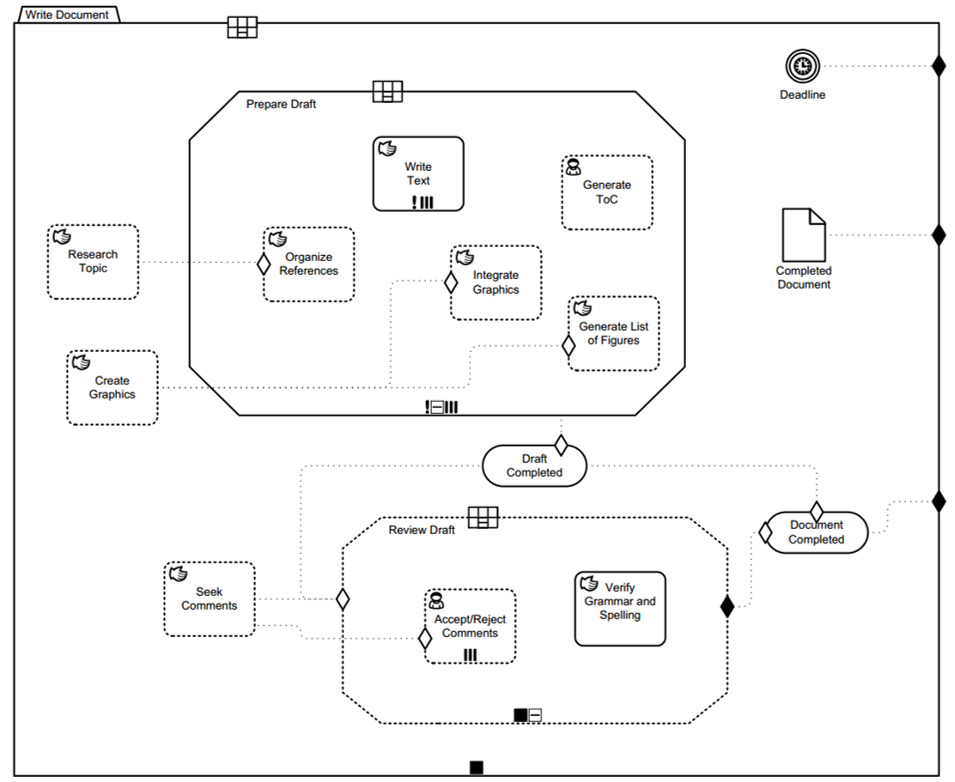Next to the widespread use of workflow management solutions in practice, there are many business processes that are currently not adequately supported. These processes are often very data-driven, unstructured, unpredictable, and driven by user decisions. In the literature they are usually referred to as Knowledge-intensive Processes.
As a result the Object Management Group (OMG) has recently released the Case Management Model and Notation (CMMN). Simlar to BPMN for traditional business processes this standard provides a visual notation and the operational semantics for knowledge intensive processes. The following figure shows an example diagramm in the CMMN notation:

Throughout the course of this master's thesis, the CMMN specification will be analyzed thoroughly in order to evaluate, whether it can support Knowledge-workers with their problems, which are often very complex and unique.
The main goal is to use the insights gained throughout this analysis to implement a subset of this notation in an existing research prototype. This includes an analysis of advantages and disadvantages of the CMMN specification as well as the selection of a subset that will be implemented based on existing workflow patterns and requirements for process modeling.
(Initial selection of) References: